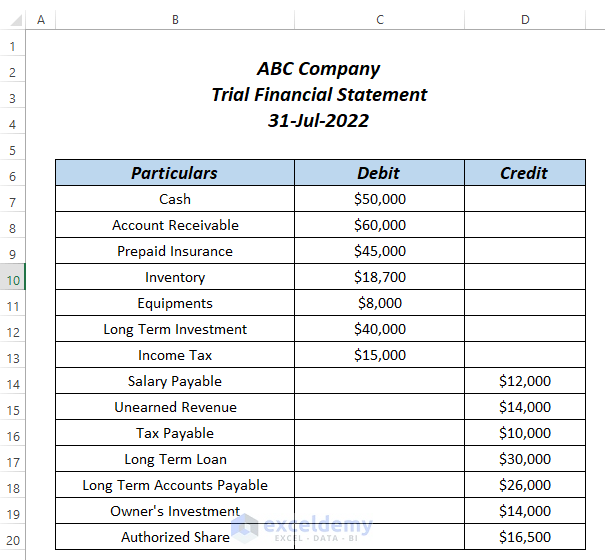 How to Automate Financial Statements in Excel" width="605" height="560" />
How to Automate Financial Statements in Excel" width="605" height="560" />Financial statements, also known as financial reports, are summary documentation of the financial condition of an organization, summarizing a company’s performance throughout the year.
 How to Automate Financial Statements in Excel" width="605" height="560" />
How to Automate Financial Statements in Excel" width="605" height="560" />
The following picture shows a Trial Financial Statement of ABC company. Using this Trial Financial Statement, we will demonstrate how to automate financial statements in Excel. We used Microsoft Office 365, but you can use any available Excel version.
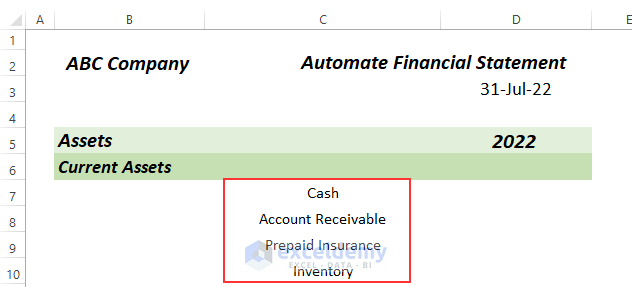
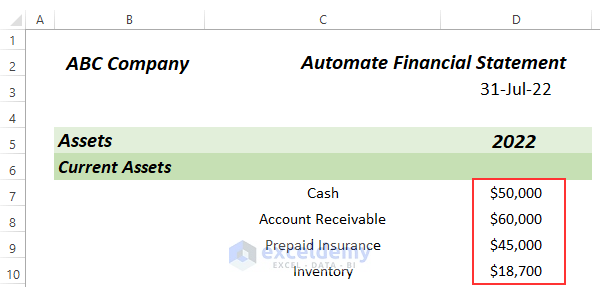 How to Automate Financial Statements in Excel" width="600" height="287" />
How to Automate Financial Statements in Excel" width="600" height="287" />
Now we’ll use the SUM function to calculate the Total Current Assets.
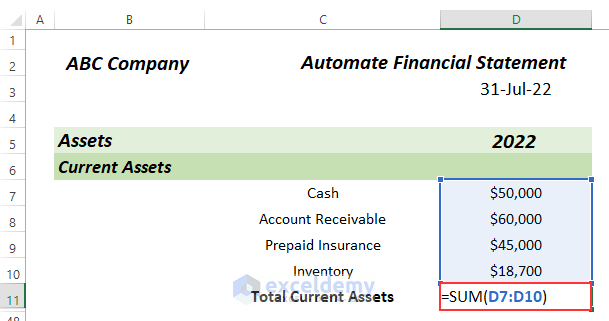
Total Current Assets are returned in cell D11.
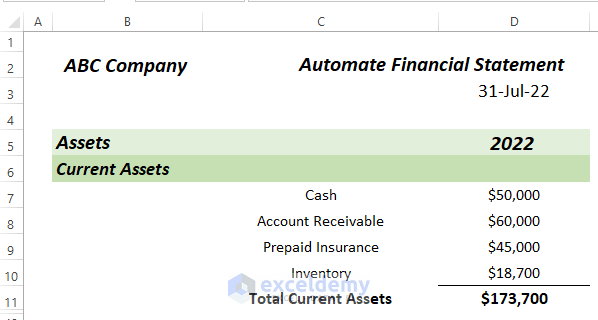 How to Automate Financial Statements in Excel" width="598" height="320" />
How to Automate Financial Statements in Excel" width="598" height="320" />
Next we calculate the Total Fixed Assets, also known as long-term assets. From the Trial Financial Statement, we identify Equipment and Long Term Investment as Fixed Assets, and calculate the Total Fixed Assets.
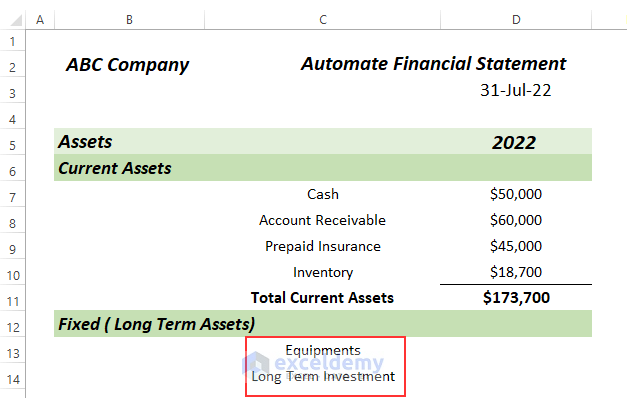
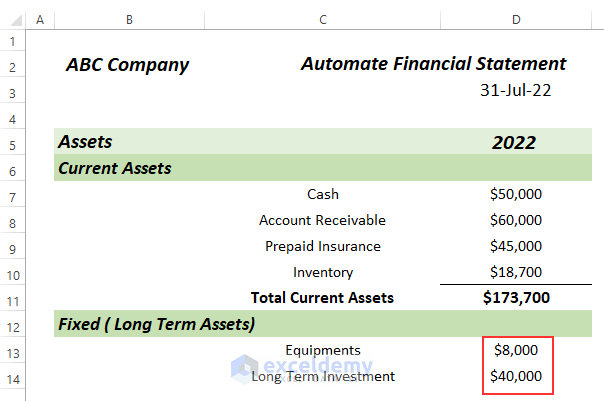
We again use the SUM function to calculate the Total Fixed Assets.
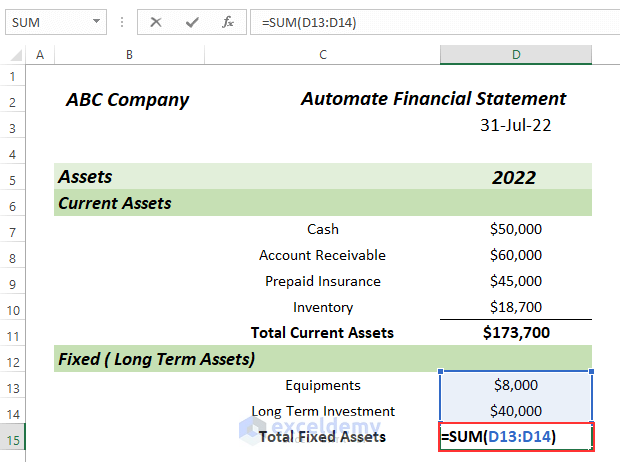 How to Automate Financial Statements in Excel" width="620" height="462" />
How to Automate Financial Statements in Excel" width="620" height="462" />
Total Fixed Assets are shown in cell D15.
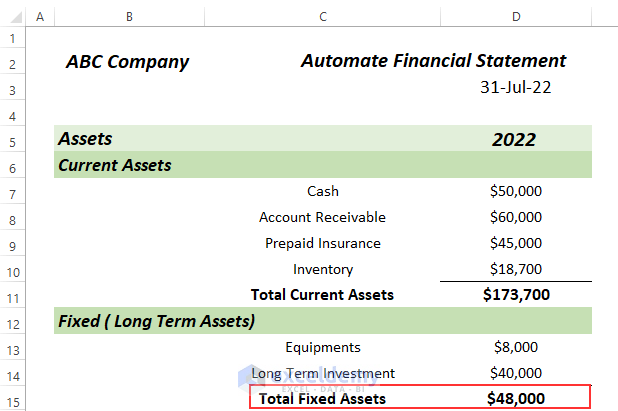
Next, we calculate the Total Other Assets.
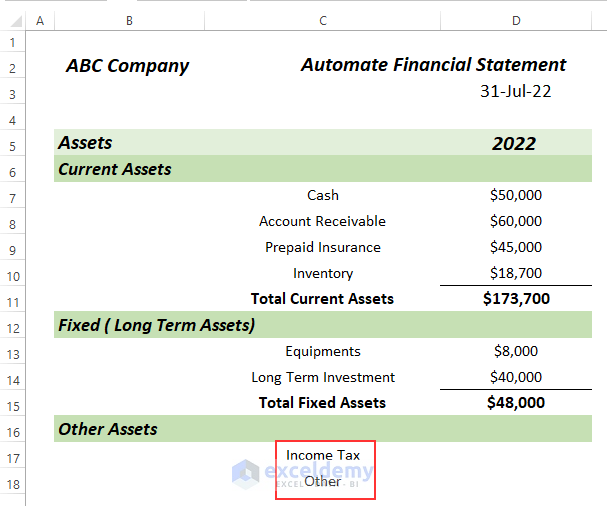 How to Automate Financial Statements in Excel" width="607" height="506" />
How to Automate Financial Statements in Excel" width="607" height="506" />
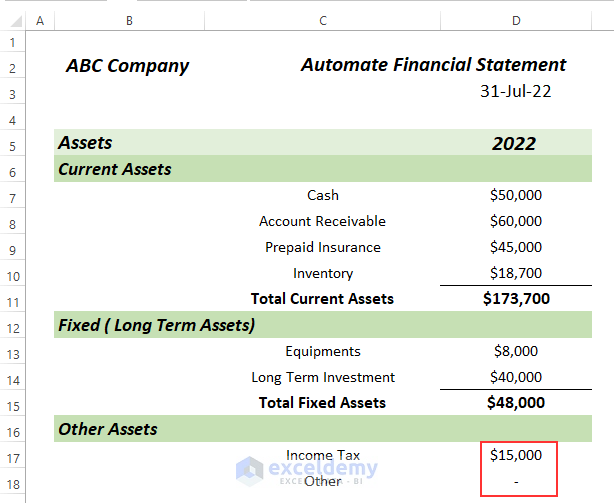
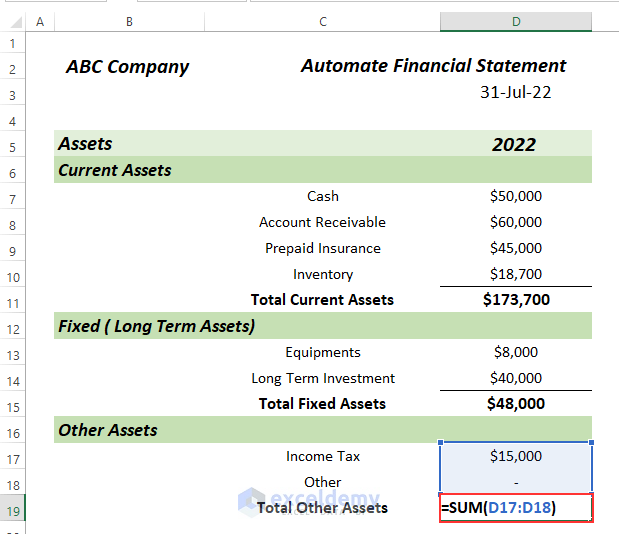 How to Automate Financial Statements in Excel" width="619" height="534" />
How to Automate Financial Statements in Excel" width="619" height="534" />
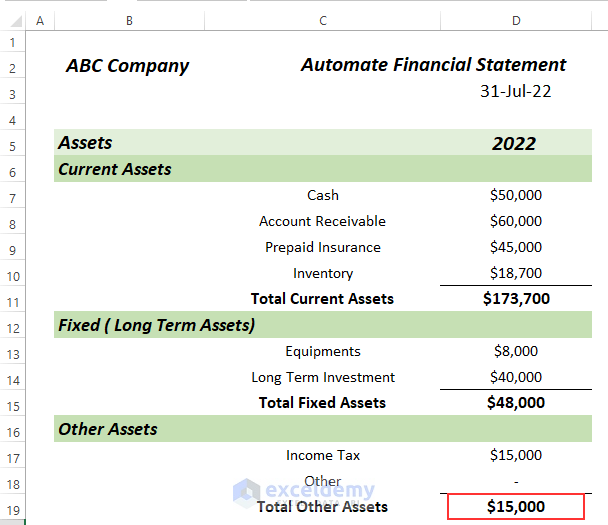
This simply adds Total Current Assets, Total Fixed Assets, and Total Other Assets.
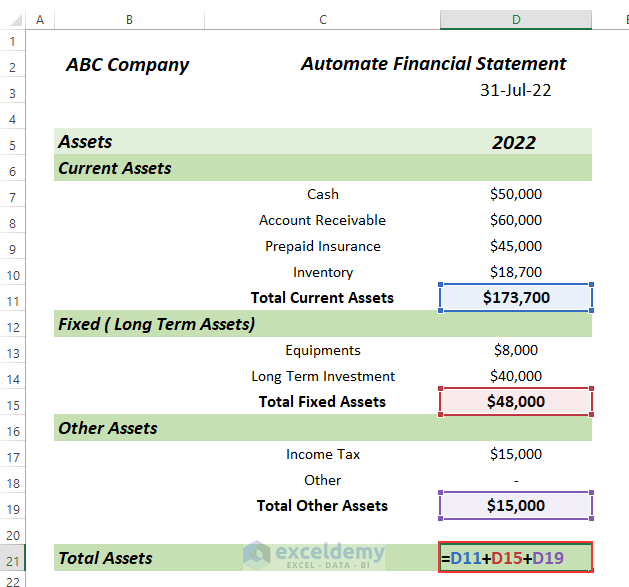
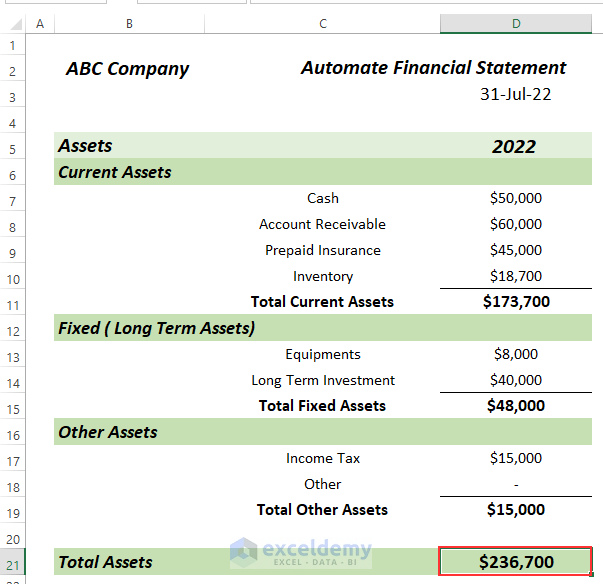 How to Automate Financial Statements in Excel" width="603" height="584" />
How to Automate Financial Statements in Excel" width="603" height="584" />
Liabilities and Owner’s Equity is a combination of Current Liabilities, Long Term Liabilities, and Owner’s Equity.
First we calculate the total Current Liabilities.
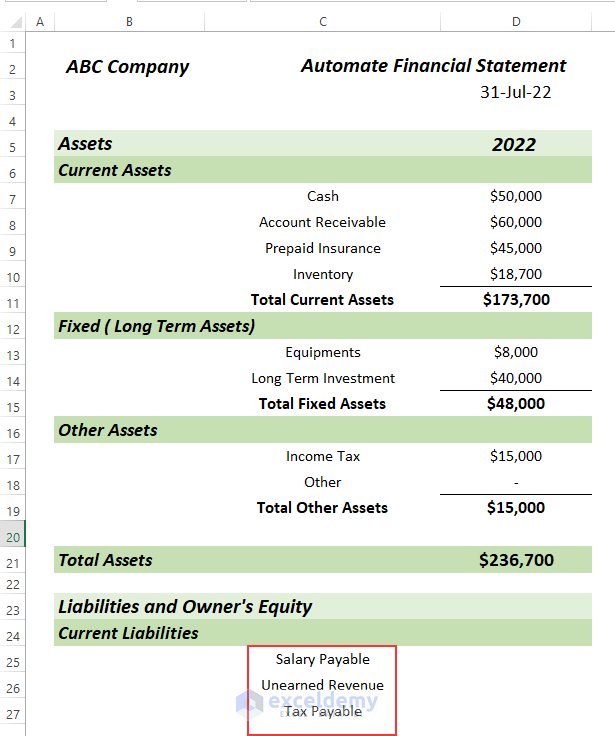
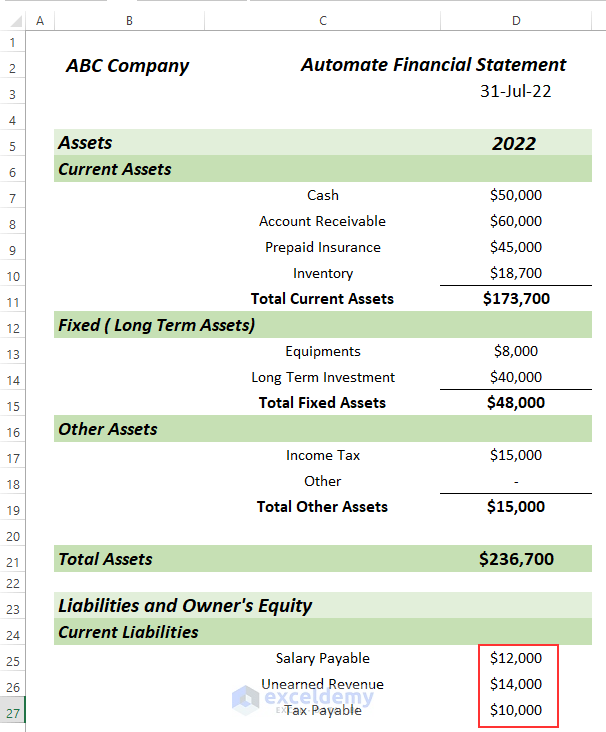 How to Automate Financial Statements in Excel" width="606" height="732" />
How to Automate Financial Statements in Excel" width="606" height="732" />
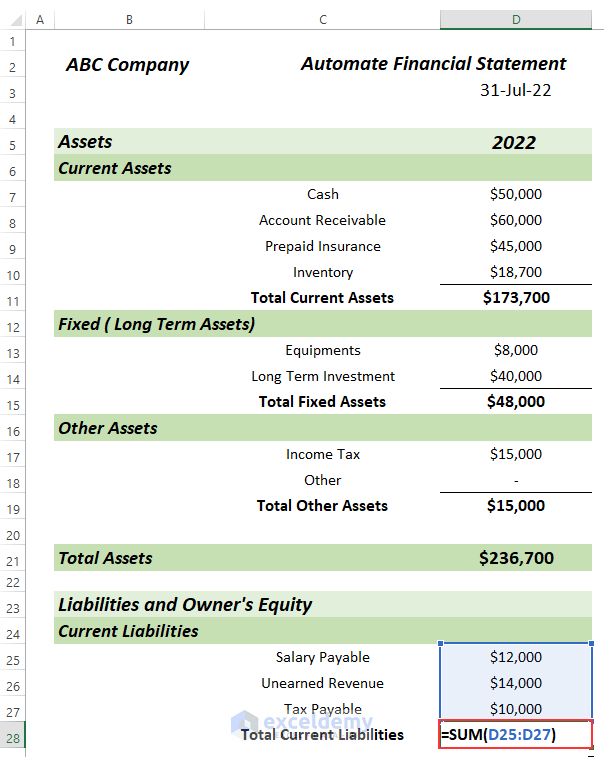
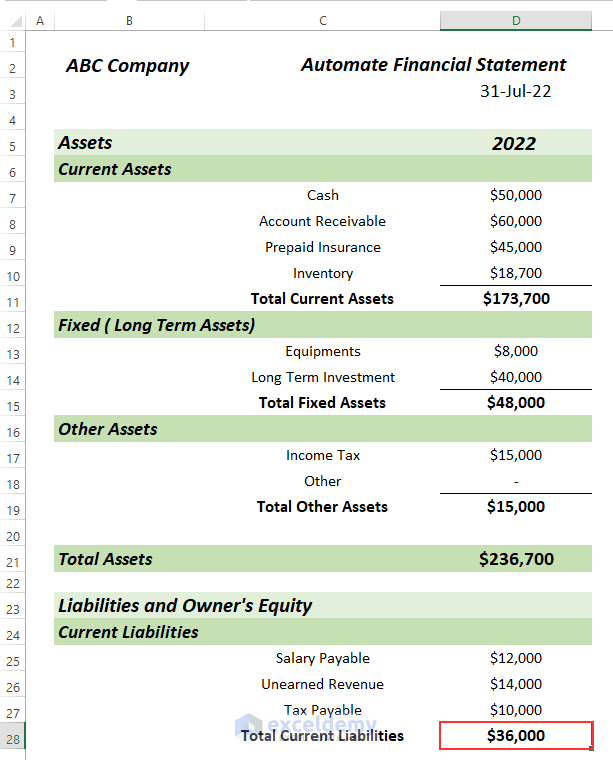
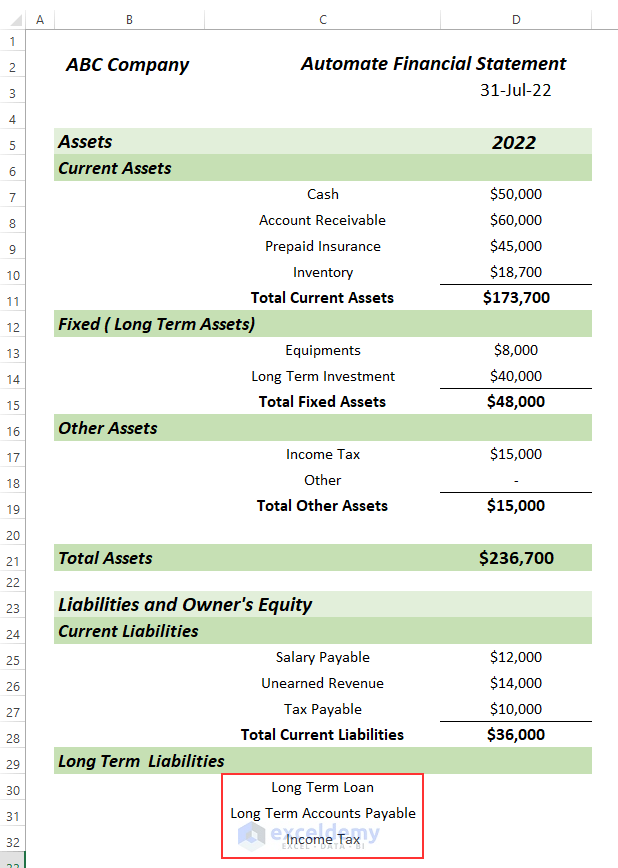 How to Automate Financial Statements in Excel" width="618" height="868" />
How to Automate Financial Statements in Excel" width="618" height="868" />
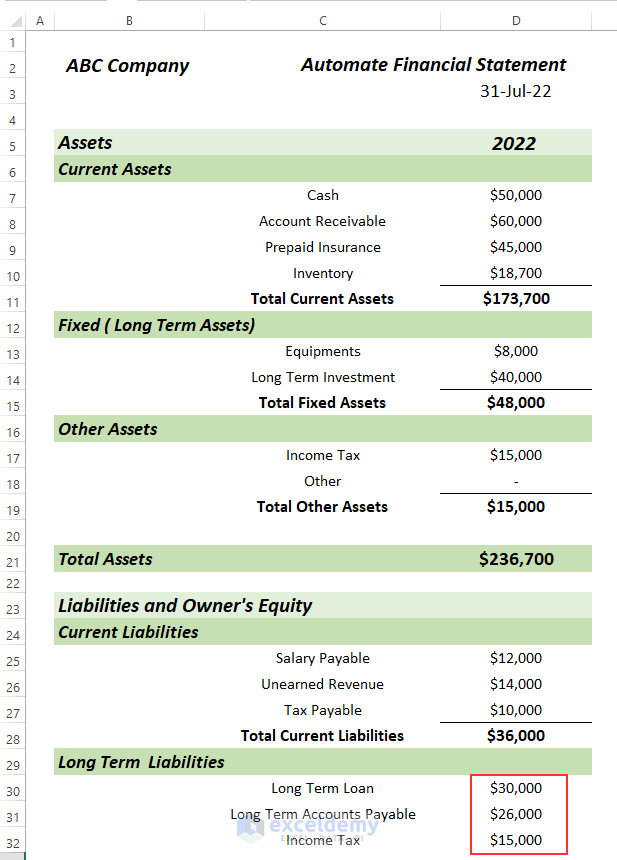
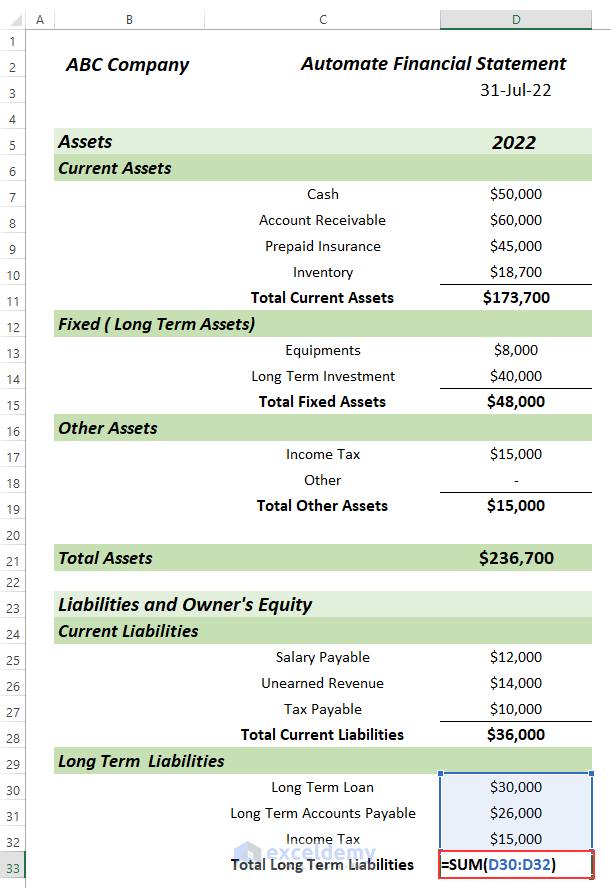 How to Automate Financial Statements in Excel" width="611" height="888" />
How to Automate Financial Statements in Excel" width="611" height="888" />
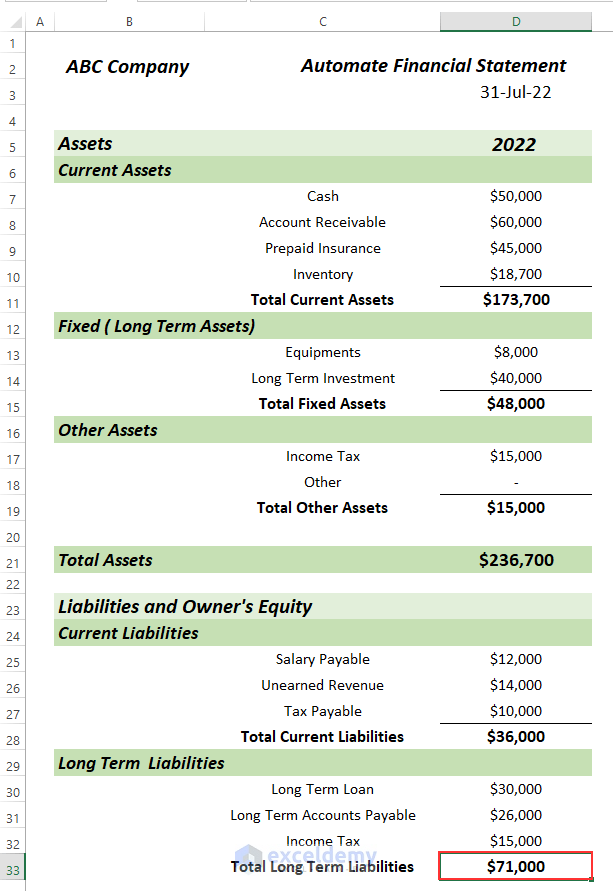
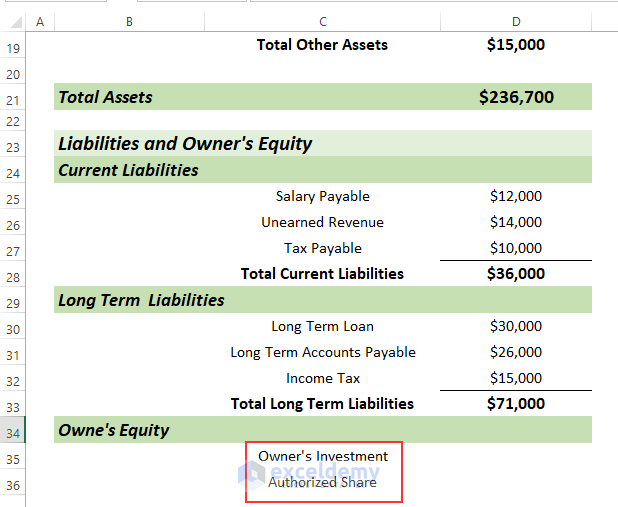 How to Automate Financial Statements in Excel" width="618" height="507" />
How to Automate Financial Statements in Excel" width="618" height="507" />
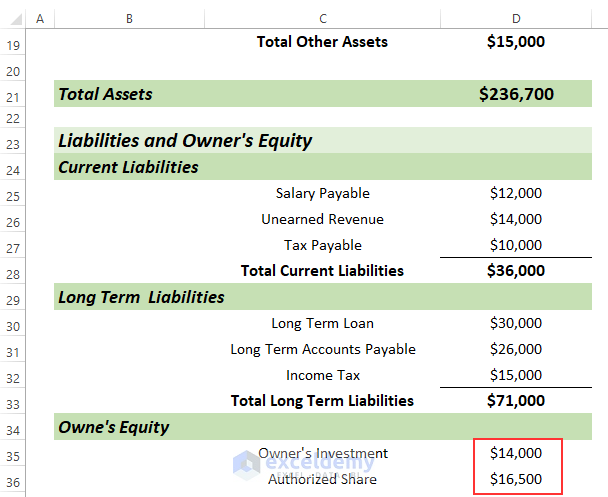
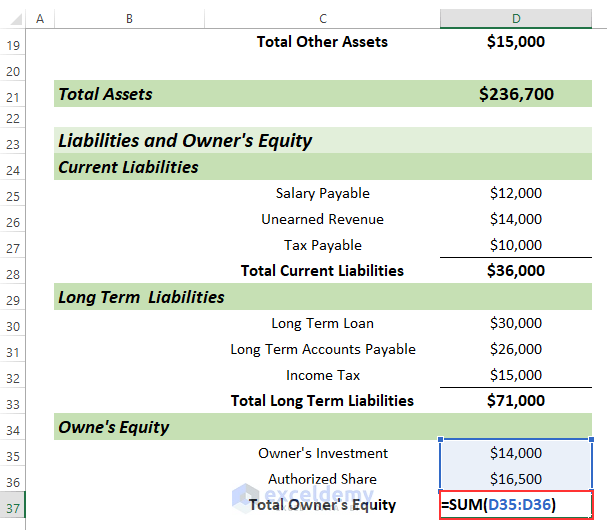 How to Automate Financial Statements in Excel" width="607" height="530" />
How to Automate Financial Statements in Excel" width="607" height="530" />
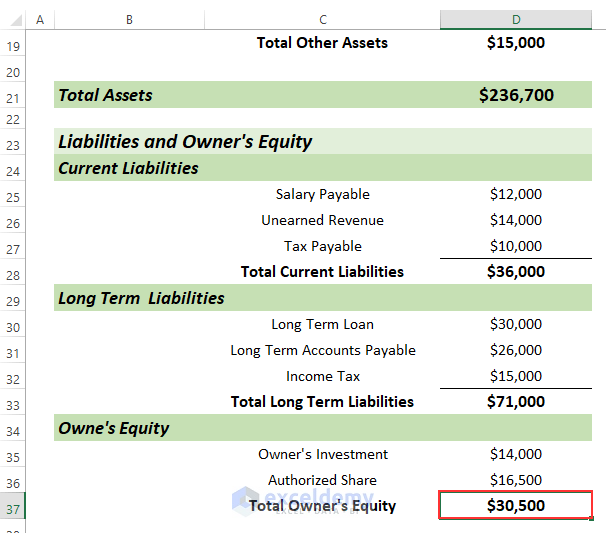
This simply adds Total Current Liabilities, Total Long Term Liabilities, and Total Owner’s Equity.
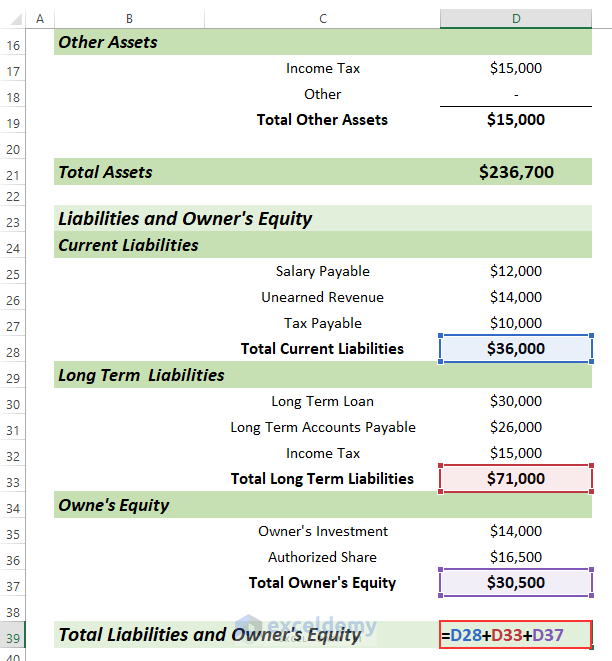 How to Automate Financial Statements in Excel" width="612" height="661" />
How to Automate Financial Statements in Excel" width="612" height="661" />
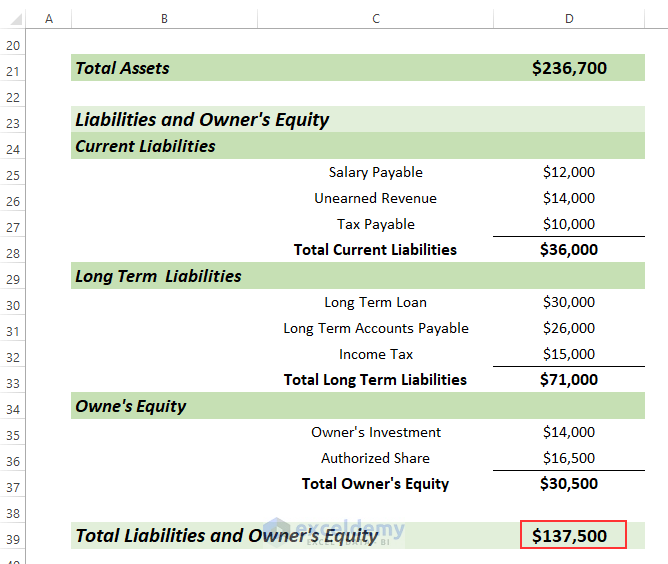
Our automated financial statement is complete.
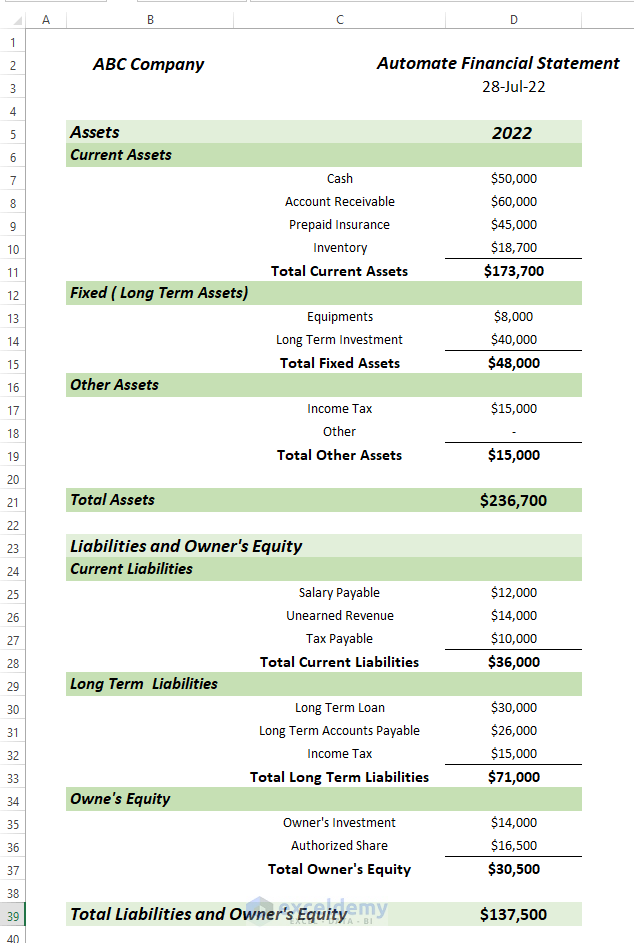
Financial statements contain several financial ratios, which give an overall view of the financial statements. Let’s determine the common financial ratios.
Debt Ratio = Total Liabilities/ Total Current Assets
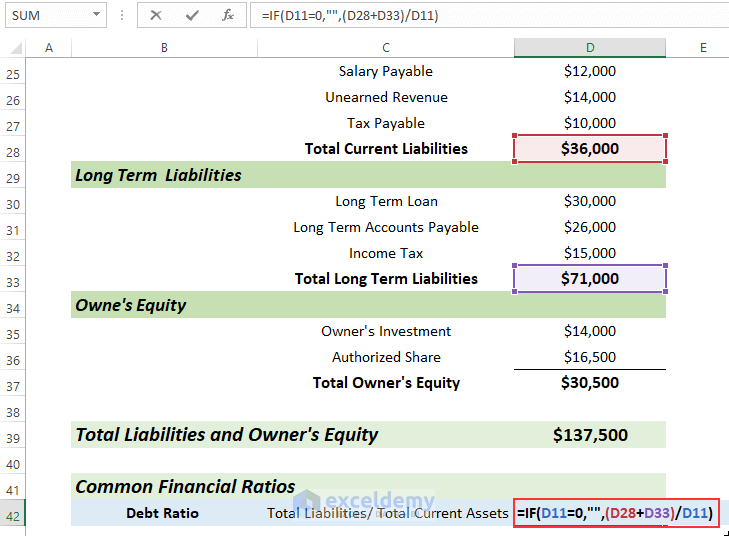 How to Automate Financial Statements in Excel" width="729" height="536" />
How to Automate Financial Statements in Excel" width="729" height="536" />
Formula Breakdown
The Debt Ratio is returned in cell D42.
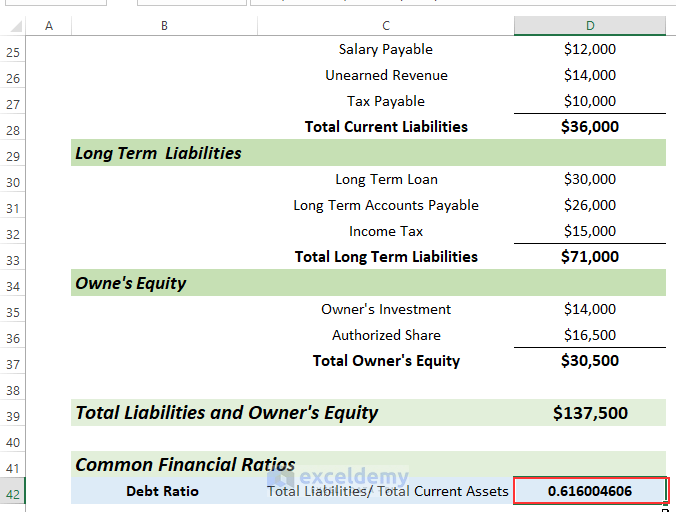
Current Ratio = Current Assets/ Current Liabilities
Here, the IF function returns a blank cell when D28 is 0, otherwise it returns the value of the division.
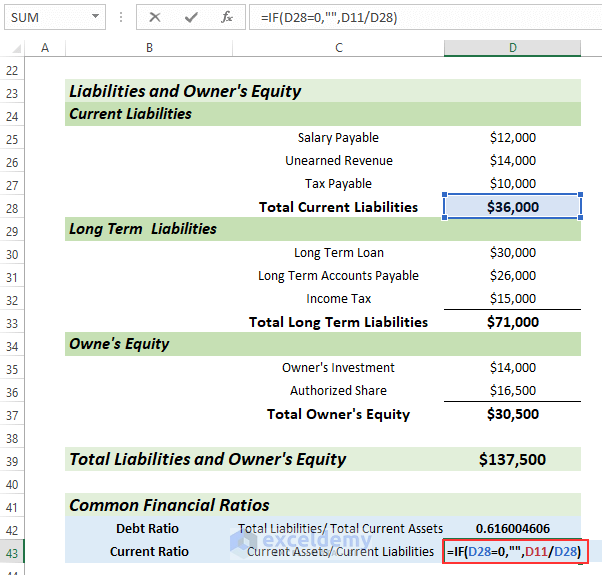
The Current Ratio is returned in cell D43.
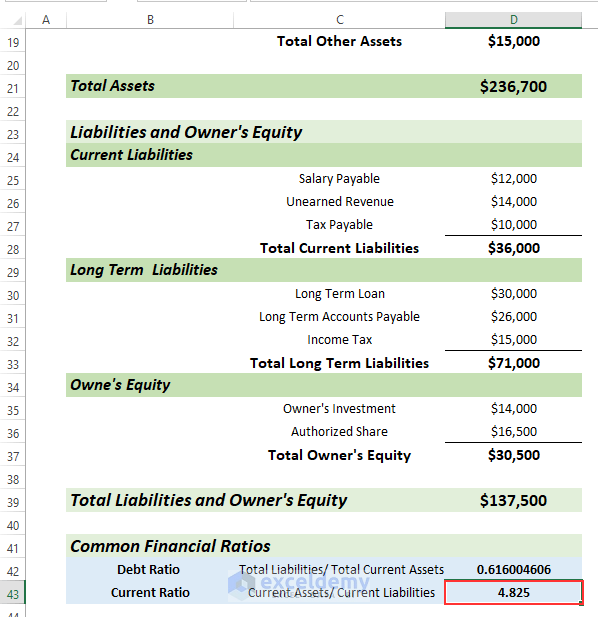 How to Automate Financial Statements in Excel" width="598" height="617" />
How to Automate Financial Statements in Excel" width="598" height="617" />
Working Capital = Current Assets-Current Liabilities
This simply subtracts cell D28 from cell D11.
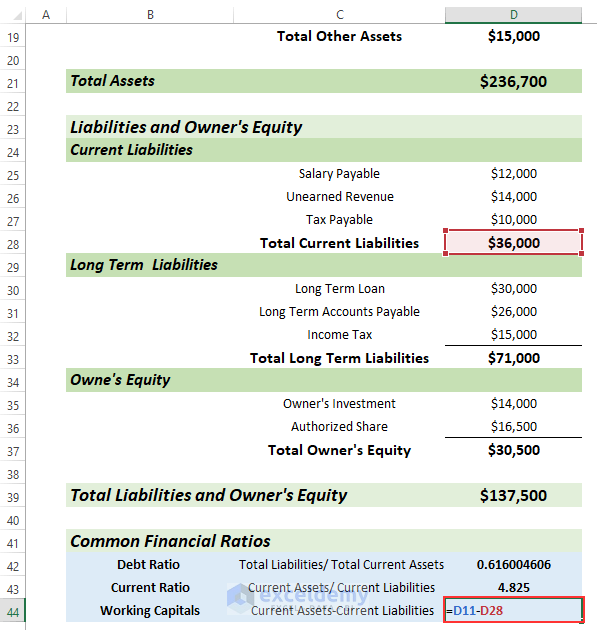
Working Capital is returned in cell D44.
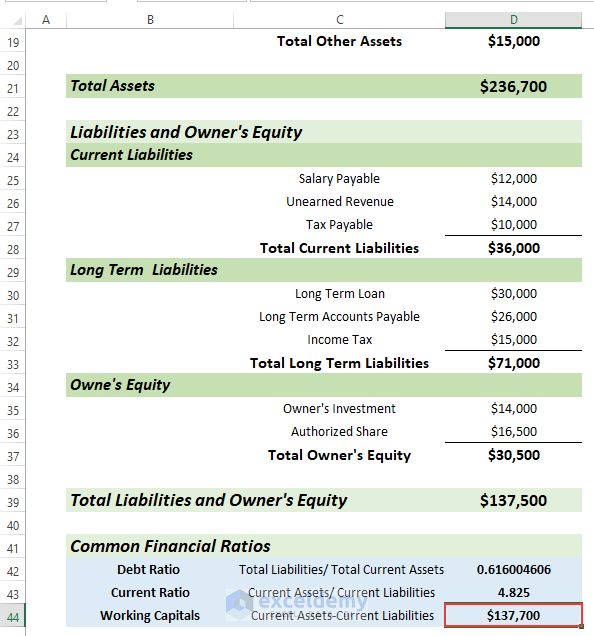
Assets to Equity Ratio = Total Assets/Total Owner’s Equity
Here, the IF function returns a blank cell when D37 is 0, otherwise it returns the value of the division.
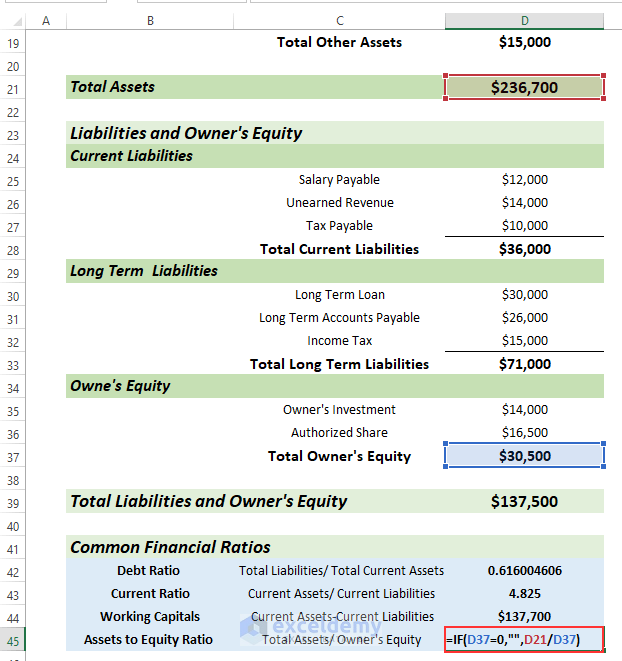
The Assets to Equity Ratio is returned in cell D45.
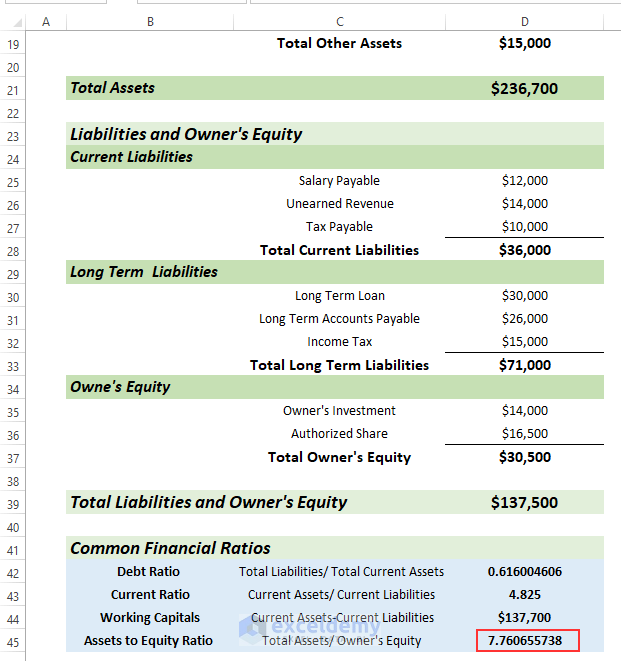 How to Automate Financial Statements in Excel" width="621" height="661" />
How to Automate Financial Statements in Excel" width="621" height="661" />
Debts to Equity Ratio = Total Liabilities/Total Owner’s Equity
Here, the IF function returns a blank cell when D37 is 0, otherwise it returns the value of the division.
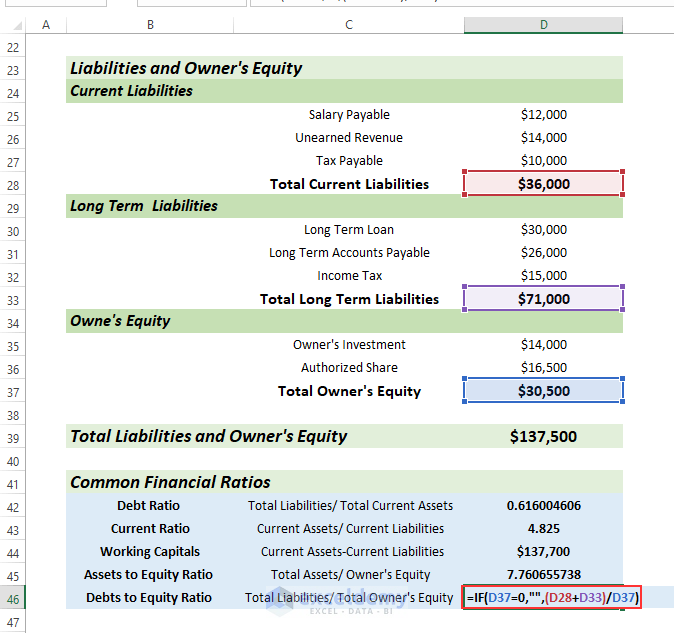
The Debts to Equity Ratio is returned in cell D45.
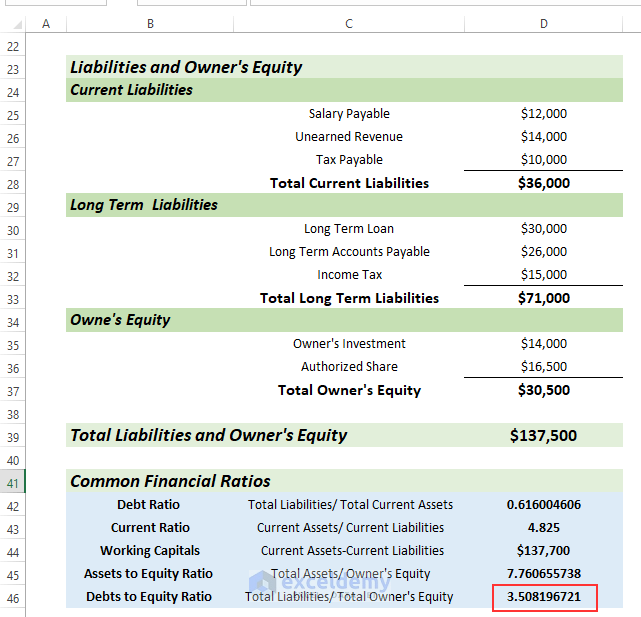
The automated financial statement with common financial ratios is complete.
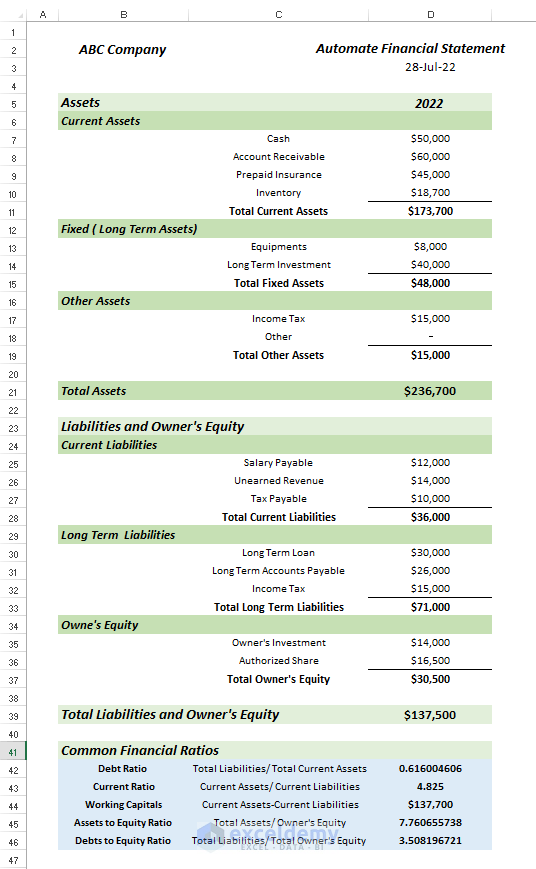 How to Automate Financial Statements in Excel" width="536" height="869" />
How to Automate Financial Statements in Excel" width="536" height="869" />
Download Practice Workbook
You can download the Excel file and practice while you are reading this article.
How to Automate Financial Statements.xlsx